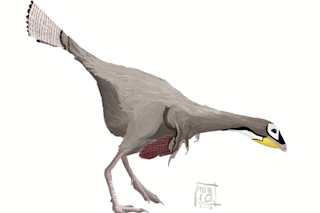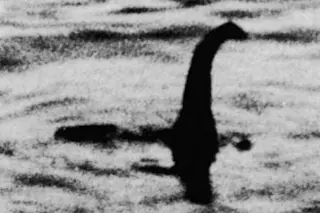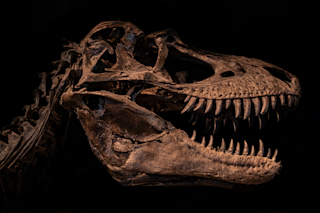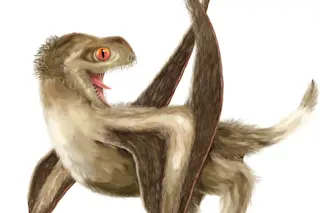Are you sitting down?
Contrary to what you may have been led to believe by the folks who make Sunkist Fun Fruits Dinosaurs Assorted Real Fruit Snacks, the monstrous reptiles that roamed the planet for 170 million years or so of the Mesozoic Era were not half-inch-high gelatinous blobs of red, purple, and green. They contained neither corn syrup nor partially hydrogenated vegetable oil. Nothing in the fossil record suggests that they traveled primeval Earth in groups of six individual pouches.
Yes, I exaggerate. You and I are obviously aware that dinosaurs, wildly popular as a motif in toys, games, books, clothing, interior design, and foodstuffs, are often inaccurately represented. We sense somehow that despite the maiasaurs’ reputation for attentive parenting, the good mother lizards didn’t iron their kids’ clothes like Mrs. Sinclair of TV’s Dinosaurs. We’ve guessed that Chef Boyardee doesn’t bake his T. rex ravioli to scale, and ...














